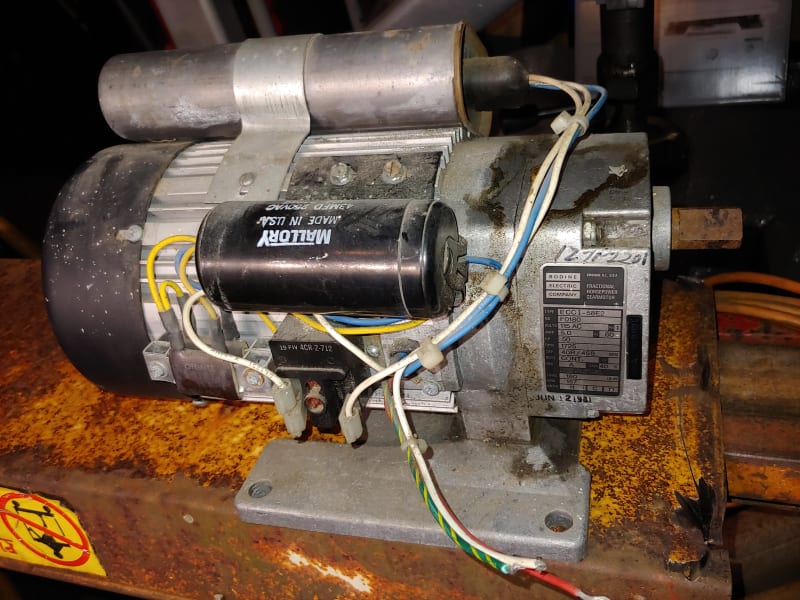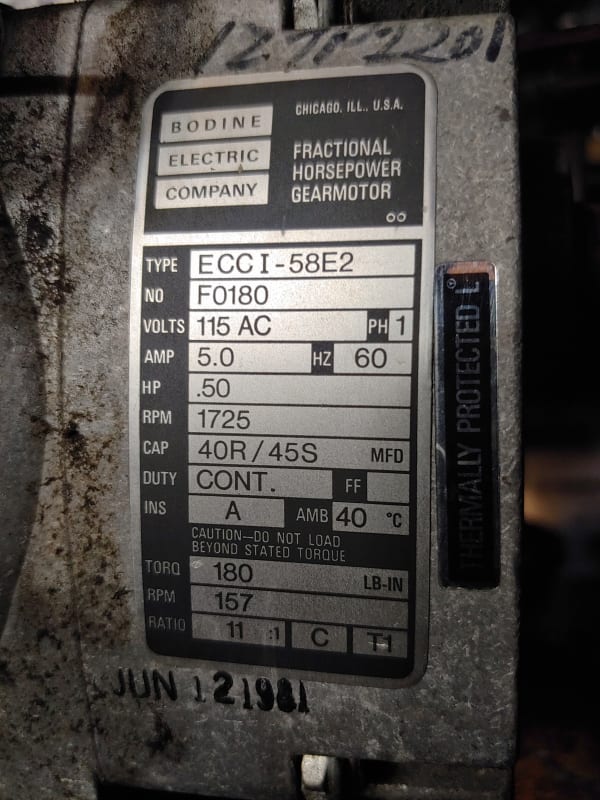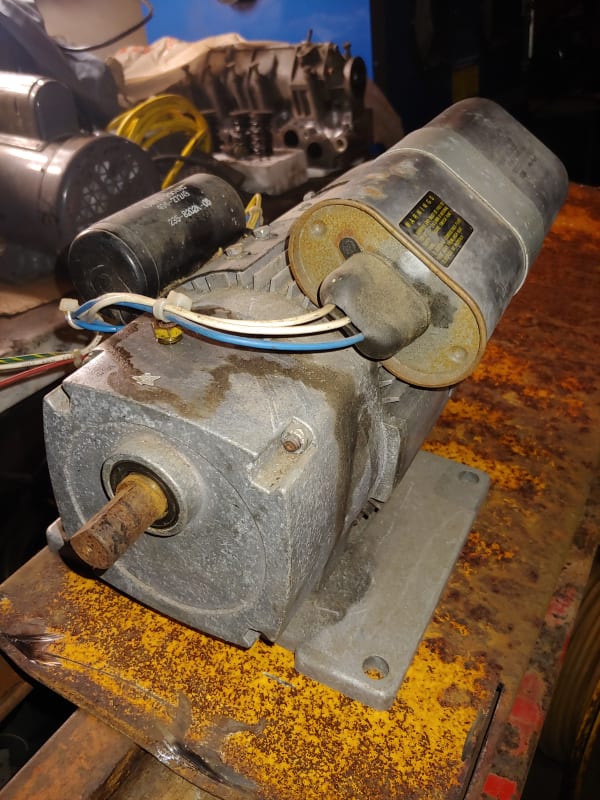Hi Logic11. You can correct your industry under the blue tab at the top right, "My Stuff/MyProfile". The choices were in one of the pulldown boxes when you first registered, the box must have slipped on you while you were filling the page out.
For your spec sheet its note of CW rotation is presumably the output shaft. The "connect for CC rotation" note may be for the motor itself with the difference being because of the number of rotation changes in the gear box.
For your wiring question:
-the nameplate gives the capacitor sizes as 40 mfd run / 45 mfd start so that will distinguish the 2 cans on the housing (okay, the black one says 43mfd)
-the brown lozenges at the lower left with yellow wires look like resistors, unusual and so would make me more hesitant about guessing the reversing connections
-the black cube with the red button is probably the centrifugal switch (well, funny location). 3 connections instead of 2 make it look suspicious too
-by the labelling there is a thermal protector, another connection point to account for. I don't see it on the outside so we might have to look inside to complete our understanding of the wiring
-the only clear wiring is the cut supply wires of red=hot, white=return and green/yellow=ground
As a design family this motor is very likely reversible but I see enough complication that I would be hesitant without the maker's info. I can trace many of the wires in your photo but not enough. This PDF
suggests that swapping the main winding leads would reverse it but I can't see enough of your wiring to tell, especially inside the case. Even then if this has been custom built for one direction it may not have equal performance in reverse even if it can be reversed.
For the gear question:
-worm gears involve a lot of thrust so the availability of bearings on both sides is important for a reversing application (waross's point)
-helical gears involve a small amount of thrust, there is a good chance that thrust washers exist on both sides as matter of this motor family being designed for many configurations
-spur gears don't have a side thrust but as slopping about against a soft casing is not a good idea there is a good chance of simple washers being in place.
As mentioned yours is not a worm drive but you would have to take the box apart if you felt you had to be sure about the washers for the other gear types.
As this is getting bogged down are we just dealing with curiosity or would the motor be useful if it could be reversed?
Bill



